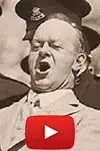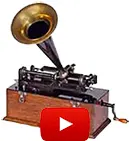Waltzing Matilda: Australia's Favourite Song
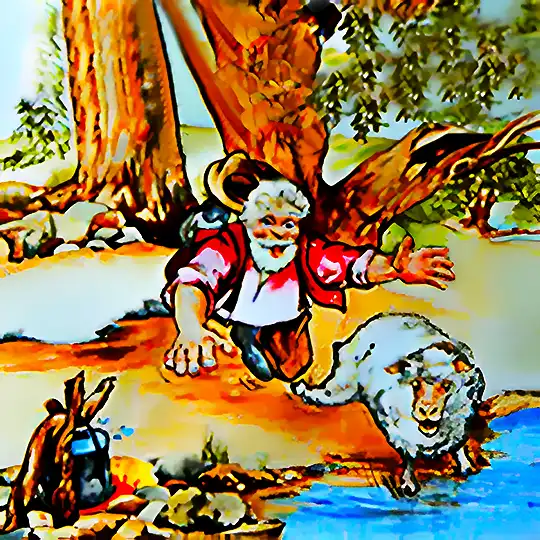
Swagman catching sheep by a billabong
Contents
What’s "Waltzing Matilda" About?
"Waltzing Matilda" tells the story of a swagman — a traveling labourer — who steals a sheep and is caught by the landowner and police. Rather than face arrest, he jumps into a billabong and drowns. According to legend, his ghost still haunts the waterhole, forever singing the song’s refrain.
Over time,Waltzing Matilda has become a powerful symbol of the identity, resilience, and independence of the Australian people. The song's popularity even rivals Australia’s national anthem. Banjo Paterson wrote the lyrics to Waltzing Matilda in 1895, and the music was composed by Christina Macpherson.
"Waltzing Matilda" Words (Lyrics)
Verse 1
Once a jolly swagman camped by a billabong,
Under the shade of a coolibah tree,
And he sang as he watched and waited 'til his billy boiled,
Who'll come a-waltzing, Matilda, with me?
Chorus:
Waltzing Matilda, Waltzing Matilda,
Who'll come a-waltzing, Matilda, with me?
And he sang as he watched and waited 'til his billy boiled,
Who'll come a-waltzing, Matilda, with me?
Verse 2
Along came a jumbuck to drink at the billabong,
Up jumped the swagman and grabbed him with glee,
And he sang as he stowed that jumbuck in his tucker bag,
You'll come a-waltzing, Matilda, with me.
(Chorus repeats)
Verse 3
Up rode the squatter, mounted on his thoroughbred,
Down came the troopers, one, two, three,
"Whose is that jumbuck you've got in your tucker bag?"
You'll come a-waltzing, Matilda, with me.
(Chorus repeats)
Verse 4
Up jumped the swagman, leapt into the billabong,
"You'll never take me alive!" said he,
And his ghost may be heard as you pass by that billabong,
Who'll come a-waltzing, Matilda, with me?
(Chorus repeats)
Waltzing Matilda Verses Explained
Verses 1 & 2 – A Hungry Traveller
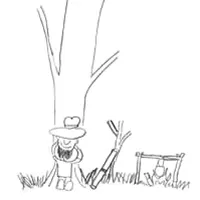
A hungry worker (swagman) is resting under a shady eucalyptus tree (coolibah) beside a watering hole (billabong). He is making himself some tea in a tin can (billy) and sings to himself, asking, "Who will keep me company—who will be my friend as I travel from place to place?"
Verses 3 & 4 – A Desperate Act
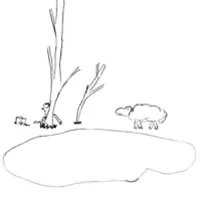
While resting by the billabong, singing his little tune, the swagman notices a sheep (jumbuck) wandering down to the watering-hole for a drink. The swagman is starving. So he catches the sheep, kills it, eats what he can, and stows the rest in his backpack (tucker bag).
Verses 5 & 6 – Caught Red-Handed
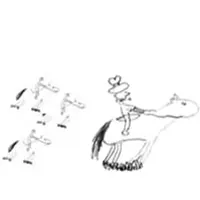
Unfortunately for the swagman, the wealthy landowner (squatter) arrives at the water-hole accompanied by three policemen (troopers). They catch the swagman red-handed with the remains of the sheep in his backpack and try to arrest him for killing the sheep.
Verses 7 & 8 – A Tragic End
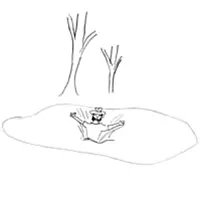
Rather than be arrested, the swagman jumps into a water-hole and tries to escape. But, unfortunately, the swagman drowns instead. Ever since that day, his sprite is said to still haunt the water-hole and can be heard singing. "Who'll come a-waltzing, Matilda, with me?".
Meaning of Words Used In Waltzing Matilda
The the song Waltzing Matilda is filled with lots of traditional Australian slang. Here's what it all means:
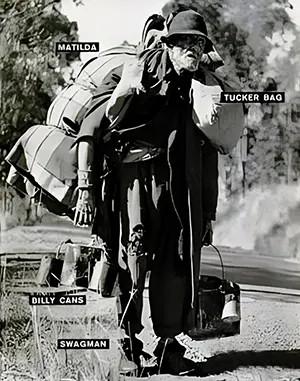
Photo: Swagman with a Matilda, Tucker Bag and Billy
• Waltzing Matilda – Walking from place to place with belongings in a swag. The phrase comes from the German term 'auf der Walz,' meaning to journey while learning a trade. (read more here).
• Jolly – To be happy (Not in common usage today).
• Swagman – A hobo, an extremely poor itinerant worker, who travelled on foot carrying all his belongings wrapped in a blanket slung over his shoulder (a swag) .
• Billabong – A waterhole or pond. It is an aboriginal word meaning little or no water.
• Coolibah Tree – A type of eucalyptus tree that usually grows near water sources.
• Billy – A tin can with a wire handle used to boil water.
• Jumbuck – Slang for sheep. It is derived from the two words jumping buck.
• Waltz – Means to travel from place to place. Roughly translated as "on the road".
• Matilda – To carry one's belongings in a blanket slung over his shoulder.
• Tucker Bag – A bag for storing and carrying food (tucker), usually an old sugar or flour sack.
• Squatter – A wealthy landowner, a rancher.
• Thoroughbred – A pedigreed horse.
• Trooper – A policeman or soldier on horseback.
The Origins of the Phrase "Waltzing Matilda"
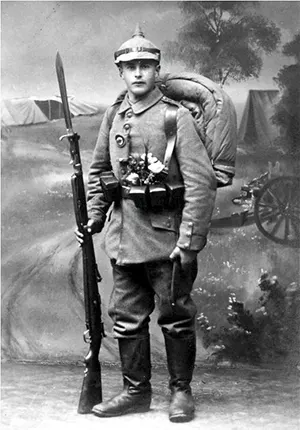
Photo: Soldier with Matilda
The phrase "Waltzing Matilda" means to travel on foot, from place to place, carrying one's belongings in a bundle slung over one's back. It gained popularity in the 1890s among impoverished workers in rural Australia. It originated from German immigrants who started settling in Australia around 1838. Waltzing is from the German term 'auf der walz', which means travelling while learning a trade. In Australia, the German word 'walz' became 'waltz' after a fashionable dance at the time. Matilda has German origins, too. It was a name given to females who accompanied soldiers during the Thirty Year Wars in Europe. The expression then evolved to mean" to be kept warm at night" and later to mean the great army coats or blankets that soldiers wrapped themselves with. These were rolled into a swag and carried behind their shoulders while marching (see photo). So that's how the phrase 'Waltzing Matilda' originated.
Who Wrote Waltzing Matilda? Author and Composer
Waltzing Matilda was written by Banjo Paterson in 1895, with music composed by Christina Macpherson. Paterson was captivated by a whimsical tune Christina often played on her zither. After hearing the story of a swagman who met a tragic fate, he set lyrics to her melody, creating what would become Waltzing Matilda. They refined the song at the North Gregory Hotel in Winton, Queensland, and it soon became a beloved national symbol. The cheerful version known today was later arranged by Maria Cowan, quickly gaining widespread popularity.
Is Waltzing Matilda a True Story?
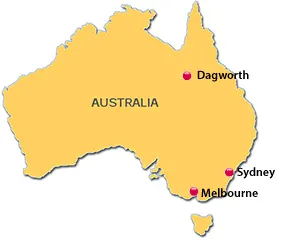
Photo: Map of sites from Waltzing Matilda
The Waltzing Matilda is based on real events that Banjo Paterson heard of while visiting Dagworth Station in Outback Queensland. While there, he heard stories from Christina's brother, Robert Macpherson, of unrest surrounding the 1894 Sheep Shearers' Strike. This unrest had spilt over to Dagworth, where a group of 16 shearers set fire to the Dagworth shearing shed, killing over a hundred and forty lambs. Robert Macpherson and three policemen had given chase to one of them, a man named Samuel Hoffmeister, who was said to be responsible for starting the fire. They didn't catch Hoffmeister, but he was found dead a day later at the Four Mile Billabong near Kynun with a gunshot wound, which appeared to be a case of suicide. In a radio interview in 1936, Banjo Paterson said, "The shearers staged a strike by way of expressing themselves, and Macpherson's woolshed was burnt down, and a man was picked up dead". There was also a story doing the rounds at that time about a police posse on the lookout for Harry Wood, a man accused of beating an Aboriginal boy to death. They didn't find Harry. But they did come across a hapless swagman camped by a billabong (possibly the Como billabong) who took fright at the sight of the approaching police and jumped into the billabong and drowned. Paterson was inspired by these tragic tales and linked up all these events to create the song's storyline and the lyrics.
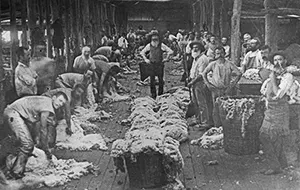
Photo: Men at work in wool shearing shed
While at the station, Banjo frequently heard Bob's sister, Christina Macpherson, play a tune on her zither (sometimes called an autoharp). Banjo liked the " whimsicality and dreaminess" of the melody and thought it would be nice to set some words to it. So it appears that Banjo linked up all these events to create the song's storyline and the lyrics. Christina played the tune on her zither and wrote the musical score.
In an radio interview in 1936, Banjo goes on to say, "Miss Macpherson used to play a little Scottish tune on a zither, and I put words to it and called it 'Waltzing Matilda'."
The First Performance and Recordings
The first public performance of "Waltzing Matilda" was by tenor Herbert Ramsay. The song quickly spread by word of mouth, gaining immense popularity.
1900: First performed publicly in Winton, Queensland. The song spread rapidly throughout the district by word of mouth and was an instant hit.
1926: First recorded in London by singer John Collinson. The recording is barely two minutes long.
1938: Marie Cowan’s version became the most widely recognized.
Today, there are over 700+ recorded versions of "Waltzing Matilda" across multiple genres, from classical and country to jazz and rock.
How Waltzing Matilda Became Australia's Favourite Song
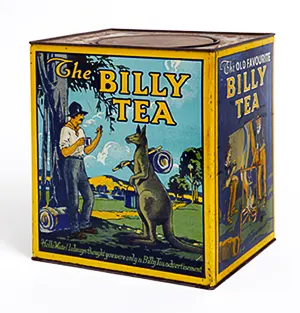
Photo: Tin of Billy Tea
In 1902, James Inglis & Co purchased the lyrics and used them to promote their Billy Tea brand. Marie Cowan, the wife of the chief accountant working at James Inglis & Co and a gifted musician adapted the lyrics, creating the version we know today. The sheet music and lyrics were then printed and wrapped around containers of Billy Tea as a promotional gimmick. It wasn't long before the song gained widespread popularity. This version of the song, known as the Marie Cowan version, is the one we hear today.
Australian troops took the song with them to war, popularizing it worldwide. To this day, "Waltzing Matilda" is sung at major events and is often considered Australia's unofficial national anthem.
Who Owns the Copyright to "Waltzing Matilda"?
While the original lyrics and melody are in the public domain, some modern arrangements and recordings may have copyright restrictions.
Other Works by Banjo Paterson Australia’s Foremost Bush Poet
The Man from Snowy River — A thrilling poem about a daring horse chase.
Clancy of The Overflow — A city dweller's yearning for the Outback.
Mulga Bill's Bicycle — A humorous tale of an overconfident cyclist.
A Note About This Web Page
This page was originally written in 1997 by Trishan, an eleven-year-old Australian boy and his dad. Over the years, it has remained a top-ranked source of information on "Waltzing Matilda." Today, it features added history, music, and multimedia, all while preserving Trishan’s original artwork.
Thank you for visiting and enjoy your journey into Australia's musical history!

